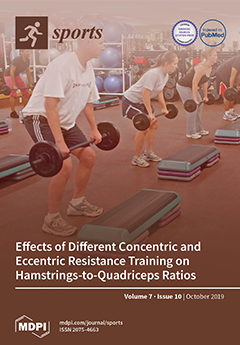Background: The purpose of this study was to investigate the effects of 30-day consumption of trans-resveratrol and polyphenol-enriched extracts on indices of exercise-induced muscle damage (EIMD) and performance following eccentric-loaded resistance exercise (ECRE). Methods: Following 30 days of resveratrol-polyphenol (RES) (
n = 10) or placebo control (CTL) (
n = 12) supplementation, subjects performed a bout of ECRE to induce EIMD. EIMD biomarkers, perceived soreness, pain threshold and tolerance, range of motion, and performance were measured before and 24 and 48 h after ECRE. Results: CTL subjects demonstrated increased soreness at 24 (
p = 0.02) and 48 h (
p = 0.03) post-ECRE, while RES subjects reported increased soreness at 24 h post-ECRE (
p = 0.0003). CTL subjects exhibited decreased pain threshold in the vastus lateralis at 24 h post-ECRE (
p = 0.03). CTL subjects also displayed decreased pain tolerance in the vastus intermedius at 24 h post-ECRE (
p = 0.03) and the vastus lateralis at 24 (
p = 0.003) and 48 h (
p = 0.003). RES participants showed no change in pain threshold or tolerance from baseline. CTL subjects showed a decrease in mean (
p = 0.04) and peak power (
p = 0.04) at 24 h post-ECRE, while RES participants demonstrated no changes from baseline. No between-group differences were observed for the changes in serum creatine kinase. Serum C-reactive protein increased similarly in both groups at 24 h post-ECRE (
p < 0.002), remaining elevated in CTL subjects while RES participants demonstrated a decline from 24 to 48 h (
p = 0.04). Serum interleukin 6 increased at 24 h post-ECRE in both groups (
p < 0.003) followed by a decrease from 24 to 48 h, returning to baseline levels only for RES subjects. Conclusion: Trans-resveratrol and polyphenol-enriched extract supplementation may support the attenuation of soreness and inflammation and improve performance recovery following ECRE without modulation of indirect biomarkers of EIMD.
Full article






